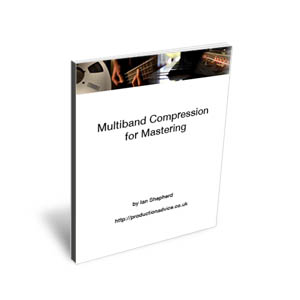Introduction
T-RackS 3 is a suite of high-quality digital and analog-modelled VST/AU/RTAS Dynamics and EQ processors, for mixing and mastering. T-RackS can also be used outside of your DAW as a standalone mastering application. Version 3.5.1 is the latest at the time of this review.
T-RackS Standard comes with the 4 ‘classic’ processors and metering suite as individual plugins also available within the T-Racks Shell or standalone.
T-Racks Deluxe has all the same functionality but adds a few more processors for a total of 9 including two analog modelled devices, the Fairchild Limiter and Pultec Tube Equalizer.
Each of the processors are also available for $99 each. The two newest additions to the T-RackS family – Black 76 Limiting Amplifier (modelled after Urei 1176), and White 2A Leveling Amplifier (Modelled after Urei LA2A Tube compressor/limiter), are only available as add-on purchases.
The decision to offer the individual processors was based on user feedback and common use. When T-RackS 3 was first released it was considered a mastering plugin, but users started liking the effects for mixing as well. Splitting up the system outside of the T-RackS Shell has made things much more convenient.
Tag: Mastering
 This month (Feb 2012) IK Multimedia is running a special 60% off on T-RackS 3 Deluxe. It’s just $199 in the online store or from your favorite retailer. [update – $99 upgrade offer for T-RackS 3 Standard users]
This month (Feb 2012) IK Multimedia is running a special 60% off on T-RackS 3 Deluxe. It’s just $199 in the online store or from your favorite retailer. [update – $99 upgrade offer for T-RackS 3 Standard users]
Buy and register Deluxe before Feb 29th and you qualify for the group buy to get a T-RackS 3 Single Black 76 or a T-RackS 3 Single White 2A for FREE.
Here’s how it works:
1. Buy T-RackS 3 Deluxe for only $199.99/€149.99* on our online store or your preferred music retailer.
2. As soon as 2,000 registrations are received, you will also be given a FREE T-Racks 3 Single title to choose from Black 76 and White 2A.
Make sure to spread the word so everyone gets a better deal! Building your own mixing and mastering studio has never been easier, but hurry, this promotion ends February 29th, 2012.
Check the Group Buy Counter here.
* All prices exclude taxes.
1 CommentLast week Ian Shepherd (productionadvice.co.uk, mastering engineer and friend of AGZ) announced the release of his first instructional E-Book Mastering with Multiband Compression.
 There is a basic and enhanced edition. The enhanced version has a bonus 1hr tutorial video, and audio examples for just $10 more.
There is a basic and enhanced edition. The enhanced version has a bonus 1hr tutorial video, and audio examples for just $10 more.
Here is the sales page:
Buying through this link will support AGZ
If you prefer not to donate, click here.
Ian sent me an advance copy and I was quite impressed. I sent him a short review for his sales page.
“I already use multiband compression in my mixing and mastering, but this eBook made me realize I’d been taking some things for granted. Reading it I gained new strategies, a greater understanding of the parameters and new ideas I can implement into my mastering projects right away” Jon Tidey, Audio Geek Zine
And this is the truth. Ian’s approach is different than the way I’ve taught myself to use multiband compression over the past couple years. I haven’t been doing it completely wrong but I now know why on several occasions it hasn’t worked as well as I’d hoped. Multiband compression was never as transparent as I’d like and it was so easy to overdo it. I know this is a common complaint about multiband compression and Ian’s book has the solution. The starting point, strategy and tips will change the way you misuse multiband compression.
This guest post comes from Barry Gardner, mastering engineer at SafeandSound online mastering
The 24 bit advantage
These days almost all digital audio workstations have the option to record and operate at 24 bit resolution. In fact it is highly likely that the vast majority of musicians and engineers are already setting their DAW’s up to work at 24 bit. 24 has a number of advantages over operating at 16 bit. I am going to explain a very important advantage which may not be as obvious. It relates to mixing reference levels on your stereo master output bus. Firstly we have to look at record levels because this is where the initial advantages occur. When you record at 24 bit resolution you have a much greater theoretical dynamic range. This means that the noise floor of the recording in the digital realm is much lower than recording at 16 bit. It is theoretically 48 dB lower than at 16 bit. So as a consequence there is no need to record anywhere as hot as when using 16 bit. In fact, a suggested recording level for 24 bit would be to have an average signal level of -18dBFS. You could even have peak signals at this level without detriment to audio fidelity. With peaks at -18dBFS at 24 bit your noise floor is still theoretically 30dB better than that at 16bit. An additional bonus effect is that to obtain peak levels of -18dBFS your mic preamps, compressors and mixer channels will be operating at a lower electrical level which means a cleaner and clearer recording.
4 CommentsMy parents weren’t cool enough to buy their 5 year old a Nine Inch Nails album when Pretty Hate Machine was first released. Actually I…
11 CommentsI just watched this interview with Mastering Engineer Greg Calbi on the subject of the Loudness Wars. It turns to a bit of a rant…
1 Comment